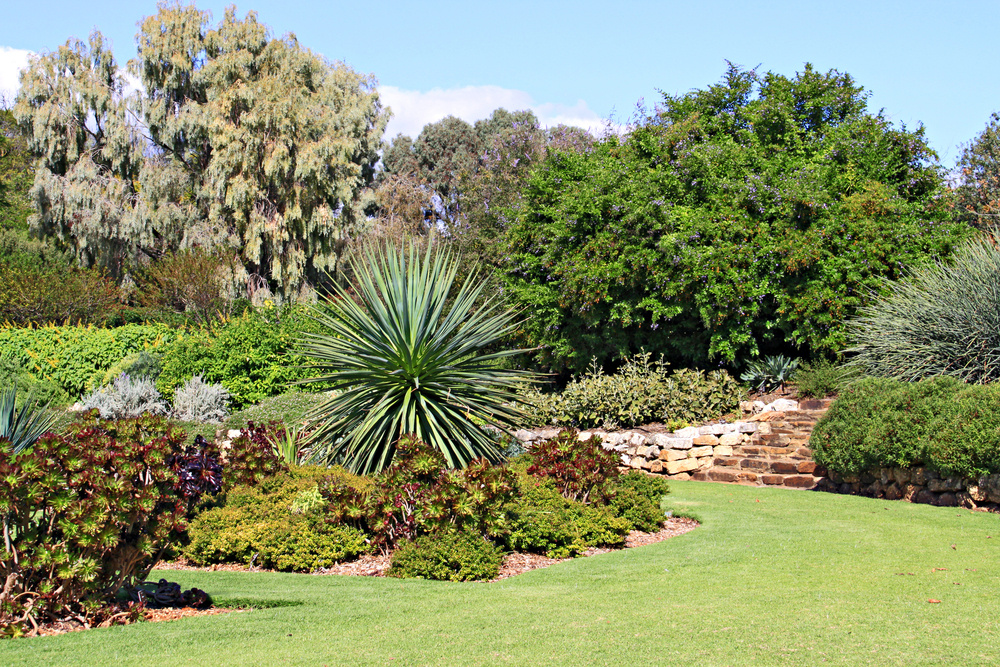Water-Wise Gardening: How to Create a Low-Water, High-Impact Landscape
Here's how you can create a beautiful, water-wise landscape that thrives with minimal maintenance and keeps your water bill in check.

Australia’s climate can be tough on gardens, especially with our scorching summers and unpredictable rainfall. But a stunning, lush outdoor space doesn’t have to guzzle water. With the right approach, you can create a beautiful, water-wise garden that thrives with minimal maintenance and keeps your water bill in check.
Want to know how? Let’s dive into some practical tips and tradie-led landscaping ideas to help you make the most of every drop.
1. Choose Drought-Resistant Plants
The first step in a water-wise garden is choosing plants that don’t need constant watering. Native Australian plants like kangaroo paw, grevillea, and bottlebrush are not only stunning but also built to withstand dry conditions. Other drought-friendly options include succulents, lavender, and rosemary, which add greenery and fragrance without the fuss.
If you’re unsure about the best plants for your climate and soil type, a local landscaper from ServiceSeeking.com.au can help you design the perfect plant palette for your space.
2. Invest in Quality Mulch
Mulch is your best friend when it comes to retaining moisture. A good layer of organic mulch (like bark chips or sugar cane mulch) around your plants helps reduce evaporation, suppress weeds, and enrich the soil as it breaks down.
Pro tip: Apply mulch about 5–7 cm thick to lock in moisture effectively. Need a hand laying mulch or refreshing your garden beds? A gardener or landscaper can get the job done quickly and professionally.
3. Use Smart Irrigation Techniques
Ditch the old-school sprinklers and opt for smarter watering solutions. Drip irrigation and soaker hoses deliver water directly to the roots, reducing waste and ensuring deep hydration where it’s needed most.
Better yet, set up a timer to water early in the morning or late in the afternoon—this helps minimise evaporation. If you need an expert to install a low-maintenance irrigation system, a tradie on ServiceSeeking.com.au can sort it out for you.
4. Group Plants by Water Needs
Not all plants need the same amount of water, so why treat them the same? By grouping plants with similar watering requirements together, you can avoid overwatering some while under-watering others.
For example, keep thirsty veggies and herbs in one zone while drought-tolerant natives and succulents go in another. A professional landscaper can help design a layout that maximises efficiency and beauty.
5. Go for Permeable Paving and Gravel Beds

Traditional concrete and asphalt trap heat and prevent rainwater from soaking into the soil. Instead, opt for permeable paving, gravel pathways, or decorative stone beds to improve drainage while keeping things stylish.
If you’re thinking of revamping your outdoor area with sustainable paving, a local paving expert can install it with precision, making sure it looks great and lasts for years.
6. Collect Rainwater
Why let good rainwater go to waste? Installing a rainwater tank lets you capture and store rain for later use, reducing your reliance on mains water. Even a small tank can make a big difference when it comes to watering your garden efficiently.
Not sure where to start? A plumber or handyman can install a system tailored to your needs, so you can make the most of every shower.
7. Add Shade and Wind Protection
Hot sun and strong winds can quickly dry out your garden. Adding shade elements like pergolas, shade sails, or strategically placed trees can help protect delicate plants and reduce water loss.
A carpenter or landscaper can build a stunning pergola or trellis that provides shade while enhancing your garden’s aesthetics. Check out ServiceSeeking.com.au to find a skilled tradie near you.
8. Embrace No-Lawn Landscaping
Traditional lawns are thirsty and high-maintenance. If you’re ready for a change, consider replacing grass with ground covers like creeping thyme, native violet, or synthetic turf. These options use less water and still provide a lush, green look.
A professional landscaper can help you transition to a low-maintenance, eco-friendly alternative that suits your lifestyle.
Make Your Garden Work Smarter, Not Harder
Water-wise gardening isn’t just about saving water—it’s about creating a sustainable, resilient outdoor space that looks fantastic year-round. Whether you need help choosing the right plants, installing a rainwater tank, or redesigning your landscape, the right tradie can make it happen.
